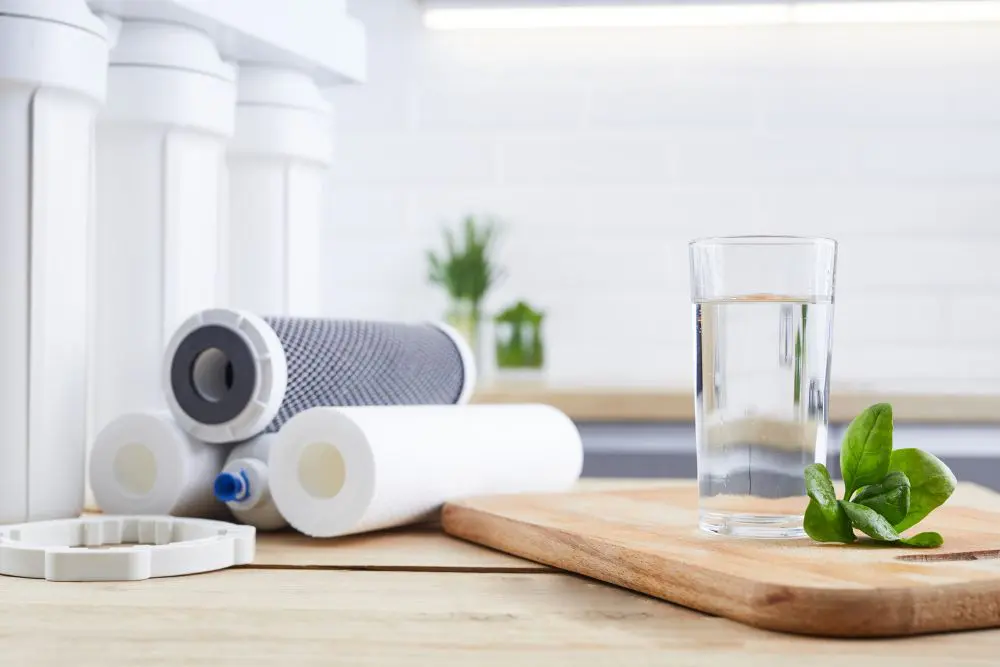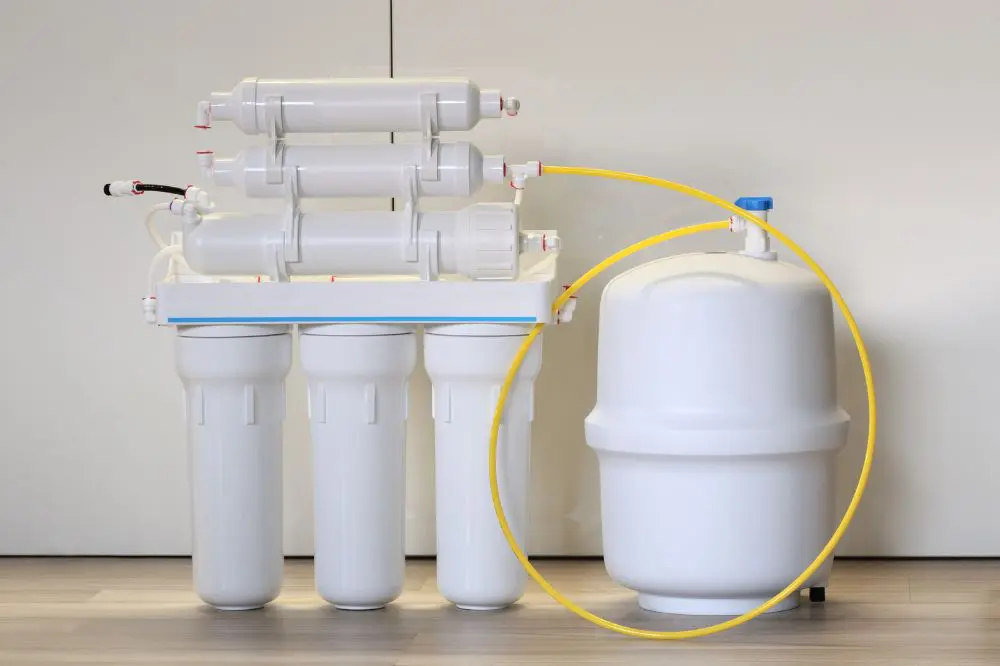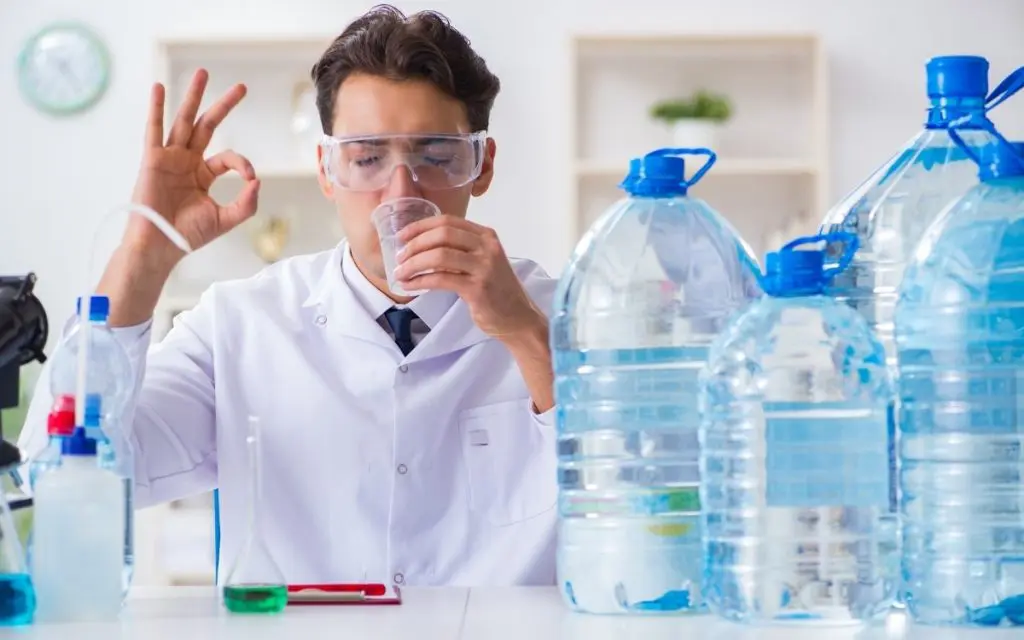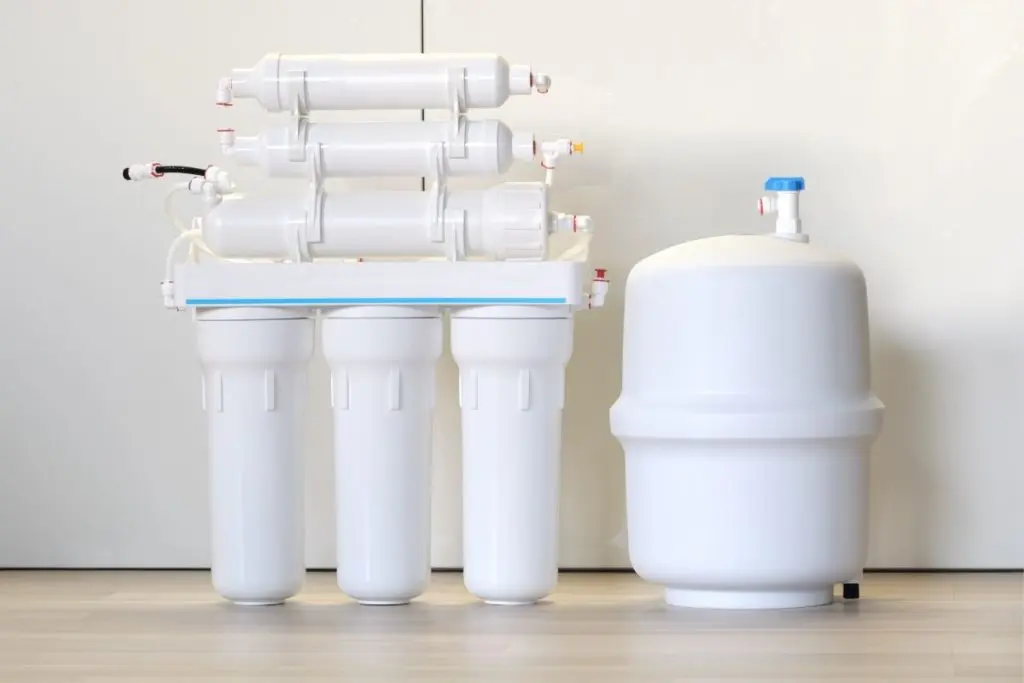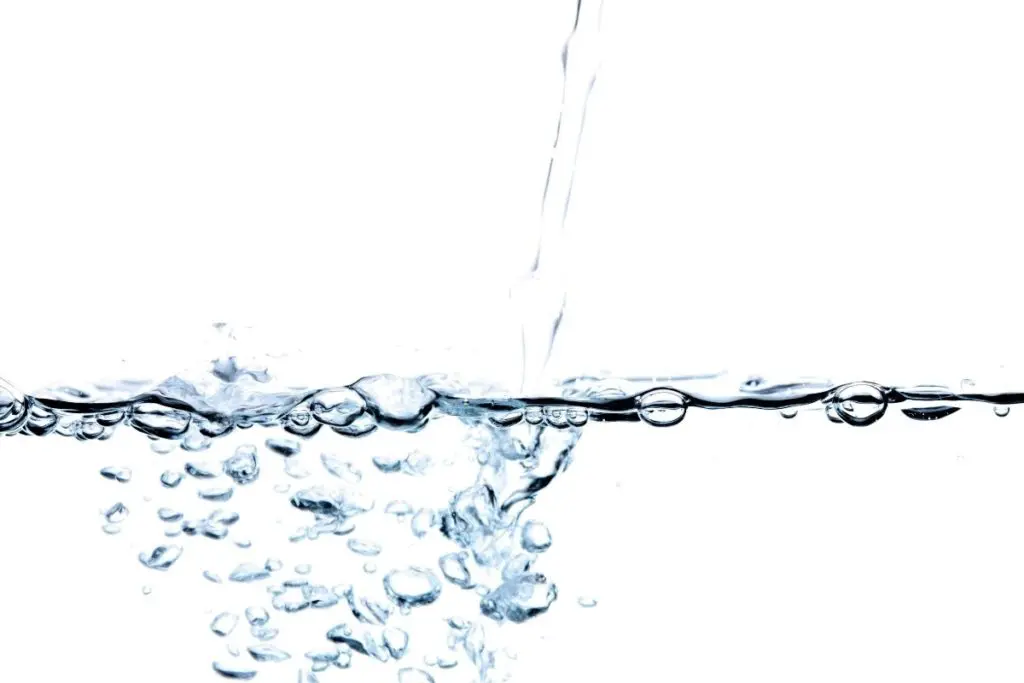Water quality has a considerable effect on health. If you find yourself doubting whether the water you drink every day is truly clean, it may be time to invest in a home water filtration system.
One of the most efficient and inexpensive ways to remove contaminants and toxic chemicals from your water is through a process called reverse osmosis, or “RO.” While reverse osmosis might sound a little complicated, it’s pretty straightforward. This article will help you break down what RO is, how it works, and how to choose a reverse osmosis system that’s right for you.
What is a Reverse Osmosis System?
And what is reverse osmosis?
Reverse osmosis is a water purification process that’s incredibly effective. It eliminates over 98% of total dissolved solids from water and removes specific contaminants that other systems cannot. This includes the likes of arsenic, chromium, pharmaceuticals, and high concentrations of nitrates.
In the diagram below, you’ll see that unpurified flows in at A. The water continues to flow through the B tube, where C (contaminants) collect. D is a partially permeable membrane filter that removes pollutants and squeezes the water into the next tube, E. From there, the water passes a carbon filter to remove any remaining contaminants, and you’re left with F — pure, clean h2o.
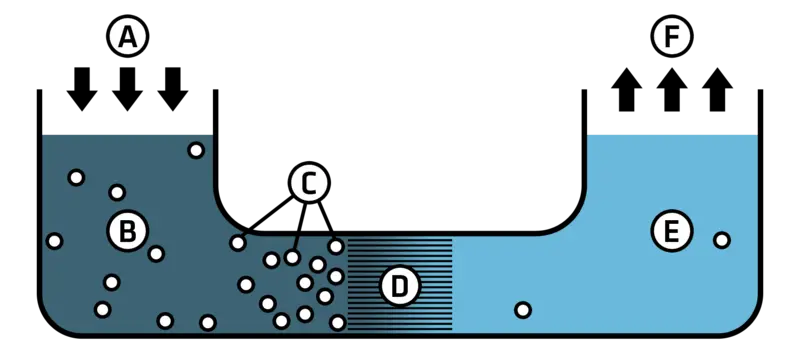
Reverse osmosis was initially developed by the U.S. Navy so that submarines could filter seawater into drinkable water. Today, that same technology is still used by the military to treat contaminated water. RO is also used in many larger industrial applications, like agriculture, as well as in business and hospitality.
However, when most people say “reverse osmosis,” they are usually referring to a home water filtration system.
Why a Reverse Osmosis System?
The benefits of a reverse osmosis system are numerous. Reverse osmosis is generally considered the gold standard of filtration. It is more thorough than any other method, removing 95-99% of all contaminants, and less expensive than other water purification methods like distillation or deionization. RO systems require very little maintenance, are relatively easy to install, and feature a handy faucet dedicated to dispensing pure drinking water on command.
How Do Reverse Osmosis Water Filtration Systems Work?
Most filtration systems work by routing water through one or more polypropylene or activated carbon filters. A reverse osmosis system goes a step further, forcing pressurized water through a semi-permeable membrane in addition to several filters.
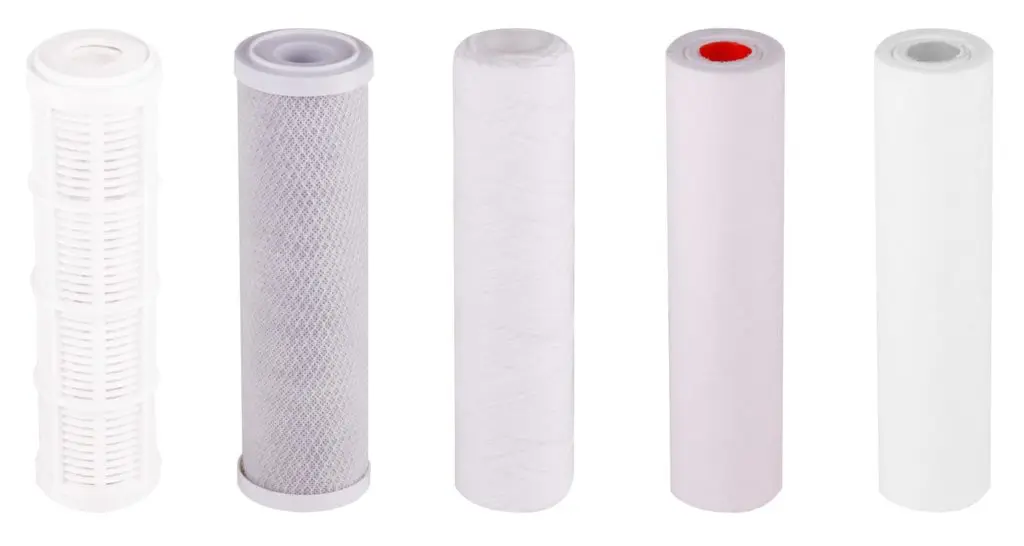
Here’s an abridged version of your water’s journey through RO:
- Water from your water line flows into the system, entering the first filter, a carbon 5-micron sediment filter. This filter removes any large sediment and contaminants like rust.
- From there, it heads into the second filter, where any sediment smaller than one micron is removed, as well as chlorine and other chemicals.
- Then it flows through the semi-permeable membrane, which sits on top of the unit. Here, any salts, bacteria, heavy metals, and tiny pollutants finer than .0001 microns are removed. This step also flushes out any impure water through the unit’s drain line.
- Then, purified water is housed in the unit’s tank before flowing through another filter, where any remaining odors or impurities are removed.
- After the final screen, the water is ready to flow through the unit’s dedicated drinking faucet. This line can also hook up to a compatible refrigerator water dispenser or ice maker.
How to Choose a Reverse Osmosis System That’s Right for You
Before you start searching for a reverse osmosis system, you’ll want to answer a few questions.
- Are you primarily concerned with filtering your drinking water, or do you want to filter all of the water used in your home? If you’ve determined that your priority is accessing pure, clean drinking water from a faucet at your kitchen sink, a reverse osmosis system is a great choice. If you need to filter all the water that enters your home, you may want to check our guide to the Best Whole House Water Filters instead.
- Do you have decent incoming water pressure? Anything below 40 psi may result in an RO system not functioning correctly. Also, consider if your water is especially cold, as this takes longer to filter.
- What’s your budget? You certainly can install a high tech, fancy reverse osmosis system if you want to! But you can also find an efficient system at a more affordable price point. Budget units start around $100, though this is certainly an instance of “you get what you pay for.” A well-reviewed, efficient, durable unit will likely cost you more like $200 and beyond. You’ll find some more contained and aesthetically-pleasing units at the upper end of that range, but remember that the unit will be entirely out of sight. Whole house RO units start at several thousand dollars and climb up from there.
- Where are you going to put it? The majority of people install an RO unit under their kitchen sink. Make sure to measure how much room you have, because while they vary in size, most systems will take up a fair amount of space. Depending on your setup, connecting a RO system from your basement up through to your kitchen might also be an option.
Top 7 Things to Consider When Choosing a Reverse Osmosis System:
1
Installation
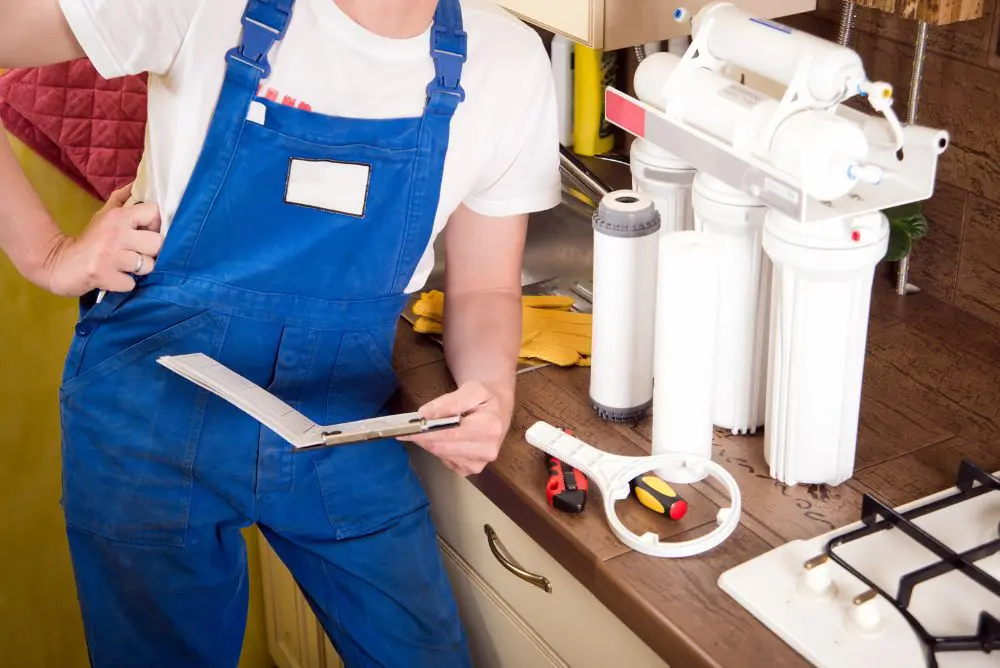
If you have some DIY skills, most systems should be doable, but sometimes hiring a plumber is a better choice. Make sure that you’re aware of the level of installation difficulty before you find yourself curled up in a cabinet, waving a wrench, and yelling at the underside of your kitchen sink.
2
Efficiency
When considering a reverse osmosis system, you want to check how long it takes for water to make its way through the unit — specifically, how many gallons per day (GPD) your RO membrane can process. Because reverse osmosis systems are so thorough, with water routed through so many filtration steps, water may dispense slowly.
While 50 GPD units tend to be less expensive than 100+ GPD units, you will get a smaller volume of water. Regardless of GPD rating, make sure your system includes a storage tank so that previously filtered water is at the ready when you need it.
A permeate pump is another element to consider. This is a non-electric device that increases the water pressure before it enters the unit’s filters. It increases water flow by up to 50% and offers the additional benefit of reducing water waste by up to 80%.
3
Taste
How important is the taste of your water? One of the drawbacks of reverse osmosis is that because it’s so efficient at filtering, it also removes any sodium and naturally occurring minerals. Those minerals are part of what makes water taste “fresh.”
Some reverse osmosis systems get around this problem by remineralizing the water at the end of the process, which brings the water back to a more alkaline state (which is a plus for some people). You may want to consider whether this additional step is something you require of your filter system.
4
Filters
Choose a reverse osmosis system with filters that are easy to find and replace. How often you need to change filters will depend on your water usage rate and your water quality. As a general rule, most filters need to be replaced every six months to two years.
5
Water Quality
If you’ve found that your water is relatively clean, or especially contaminated, this will affect which unit you should consider. If you’re mainly filtering to remove odors, sediment, chlorine, fluoride, etc., then a more straightforward model should work fine.
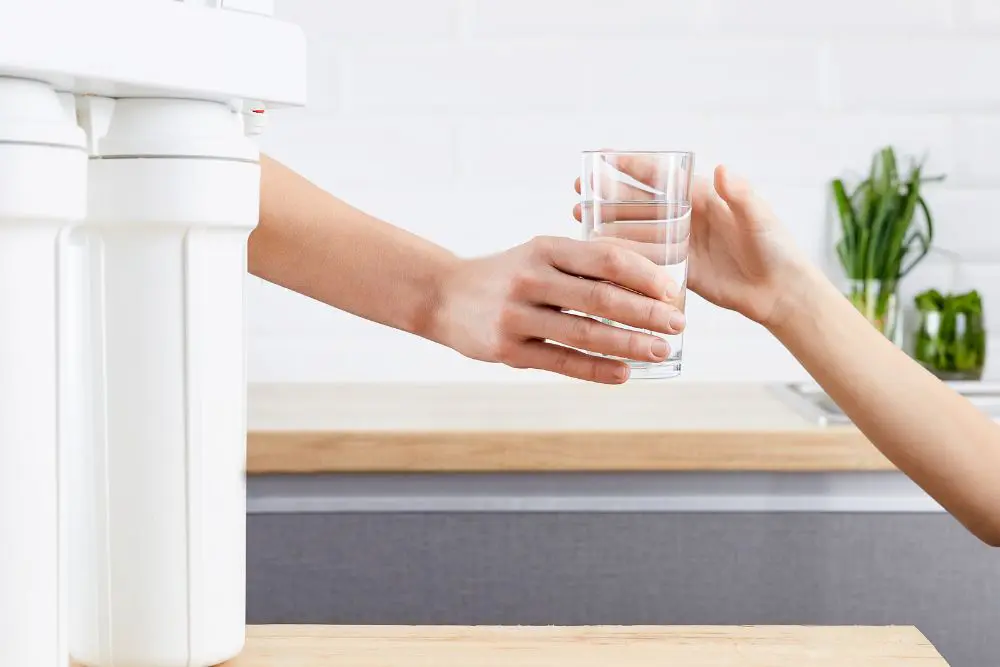
If you’ve found that you have something like high levels of bacteria or microorganisms in your water, you may want to look into a more comprehensive unit with a UV filter stage.
6
Refrigerator Connection
Many people connect their RO system to their refrigerator water dispenser and/or ice maker. Check your owner’s manual to see if that’s possible with your setup, and whether the incoming water pressure is compatible with the refrigerator’s line.
7
Warranty
If you change your filters regularly and clean your unit periodically, a reliable reverse osmosis system can last up to 10 to 15 years. However, it’s always a good idea to consider a warranty on a piece of equipment that’s so vital to your health.
Frequently Asked Questions
Is water filtered by reverse osmosis healthy for you?
Water filtered by reverse osmosis is entirely safe to drink. Reverse osmosis is the most effective way to remove contaminants from your water, eliminating the following:
- pesticides
- chlorine
- parasites
- nitrates
- sulfates
- bacteria
- arsenic
- copper
- boron
- mercury
- lead, and more.
Reverse osmosis even filters out every last bit of salt, which is excellent for those on a limited sodium diet.
However, reverse osmosis is so effective that it extracts nearly everything that isn’t H2O, including any nutrients or harmless (and sometimes even healthy) minerals. RO also makes water slightly more acidic, which can be bad for the flavor of your water. One final health-related detail to consider: reverse osmosis removes fluoride. If there are children in your household, you may want to research any impact on dental health.
Can you remineralize water that’s been through reverse osmosis?
Some people are especially concerned by the loss of minerals like iron, calcium, and manganese. If your diet doesn’t include a variety of healthy foods rich in these minerals, then not consuming them via your drinking water could be an issue. Some studies suggest cooking with purified water can also result in a loss of these minerals in some foods.
If this is of concern to you, or you’d like to improve the taste of your water, there is an option to add a remineralization post-filter to your RO system. These filters contain some form of calcium or magnesium, or a combination. They will also re-alkalize your water and bring it back up to a neutral pH level.
One other DIY option is to add a pinch of inexpensive and mineral-rich Himalayan sea salt to your drinking and cooking water.
Where are reverse osmosis systems commonly used?
We’re focusing on the types of reverse osmosis systems most commonly used in residential settings, but RO is also used in commercial and industrial contexts. Examples of commercial applications include the food and beverage industry, pharmaceutical industry, medical industry, agriculture, marine applications, and more.
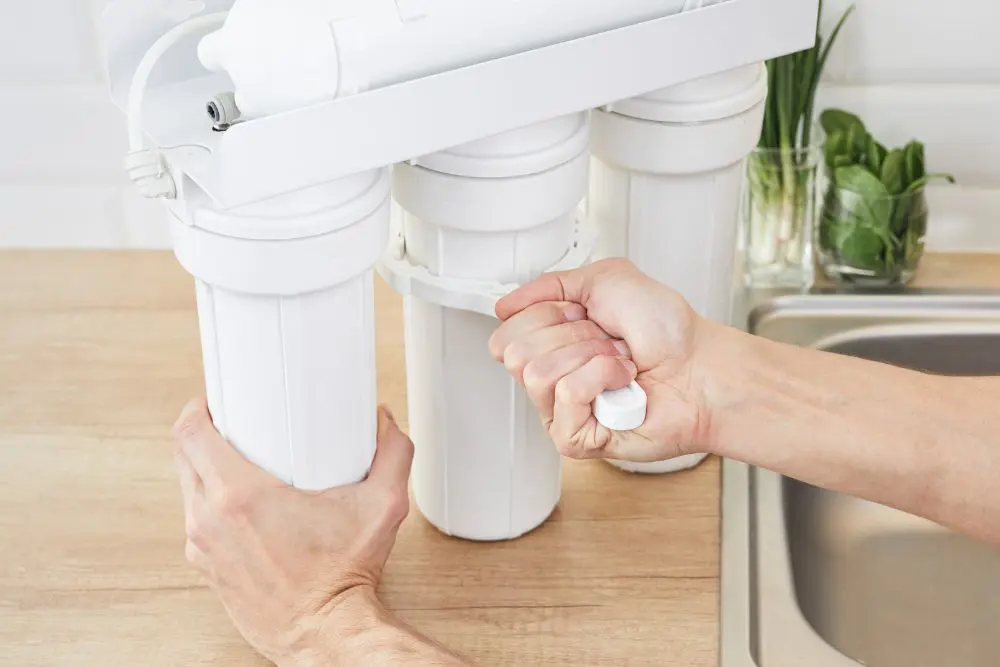
At home, residential reverse osmosis units are most commonly installed under a kitchen sink, though it’s possible in some situations to install in your bathroom, or up from your basement. In the rare instances that require a whole house reverse osmosis system (see below), a central unit would likely be installed in a garage or basement, with complementary systems installed under sinks or elsewhere.
How does reverse osmosis impact the environment?
There are pros and cons. When reverse osmosis is used on a large scale, such as with desalination, or in an industrial context, the process is energy-intensive and usually powered by fossil fuels.
Home use of reverse osmosis is on a drastically smaller scale, and far less complex or controversial. If you gave up a bottled water habit when you installed a reverse osmosis filter, you are already having a positive impact on the environment, since drinking bottled water contributes to pollution, is hugely wasteful, and is wildly inefficient to produce.
There are some concerns around wastewater that’s “discarded” from the RO system as it purifies your water. Because reverse osmosis takes a lot of water and pressure to remove contaminants, a lot of unused water goes back down the drain. The filters that are a part of the system will catch most of the unwanted pollutants, but whatever’s removed has to go somewhere — which, unfortunately, means a small percentage going back into your septic or sewage system.
Finally, since most reverse osmosis systems use water pressure to operate and do not require electricity, you’ll be shrinking your carbon footprint in that way.
How is a reverse osmosis system different from other filters?
You may be familiar with other point of use filters, like a water filter pitcher or faucet filter. These are great budget-conscious options that use activated carbon to remove underlying sediment and improve your water’s flavor. Another type of system is a whole house filter, which uses multiple filter types and additional filtration stages to clean your water right where it enters your home. All of these filtration options are very effective at targeted contaminant removal.
What distinguishes reverse osmosis from other kinds of water filtration is its semi-permeable membrane component. The membrane is where RO does its dirty work. When water is forced through, microscopic pores “squeeze out” any organic and inorganic dissolved matter.
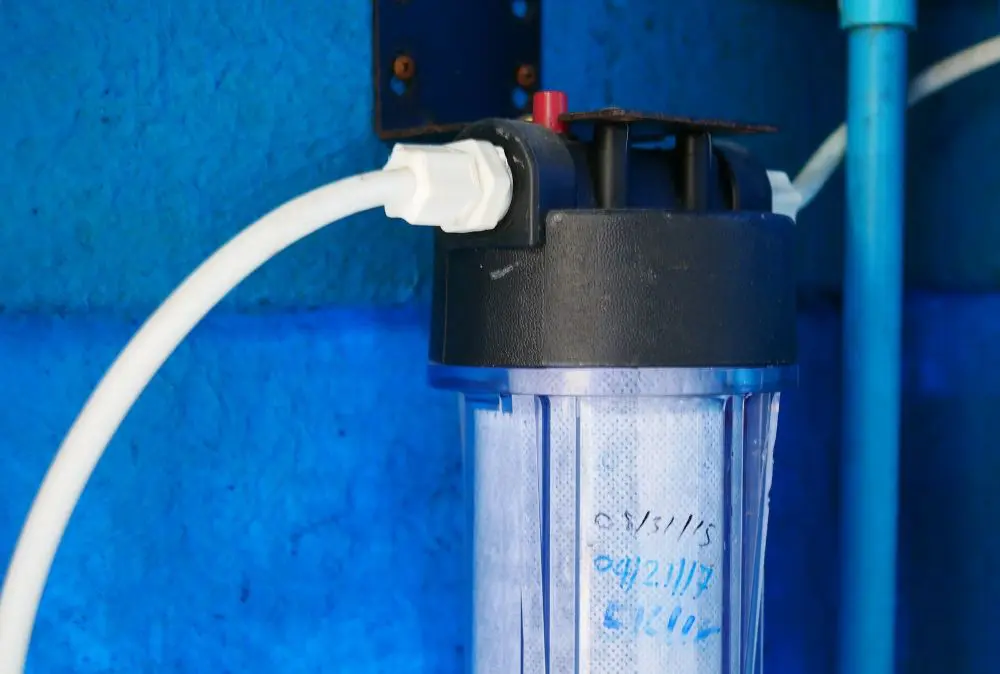
Reverse osmosis also uses “cross filtration” rather than standard filtration. Instead of just collecting inside of a filter, cross filtration means that the water crosses through the filter and splits — purified water is collected for you to drink while the contaminated water is discarded. The cross-flow also flushes away any contaminant build-up with water and pressure so that the membrane doesn’t clog.
Because reverse osmosis removes nearly all contaminants, it’s also considered a water purification system. Other systems that purify water, such as distillation and deionization, are also highly-effective, but more expensive.
How does a whole house reverse osmosis system work — and do I need one?
Most reverse osmosis and other “point of use” systems filter water at the point where you access your drinking water. On the other hand, whole house water filters are installed at the point where water enters your home, essentially filtering every drop of water you use.
While it’s possible to install a whole house reverse osmosis system, it’s likely unneeded. Whole house systems are expensive, complex, and require a lot of ongoing maintenance. An entire house RO system will also likely require parallel filtering or pre-conditioning systems, and one or more pressure pumps — bumping your costs into the $3,000 to $10,000 range.
But don’t worry. Unless your water is contaminated with astronomical levels of total dissolved solids, VOCs, arsenic, or other dangerous contaminants, it’s rarely necessary to install a whole house reverse osmosis system.
Now that you know all about reverse osmosis, you’ll be able to select the water filtration system that’s just right for you and your family. Let’s raise a glass of clean, pure water — here’s to good health and good water quality!
Further Reading
